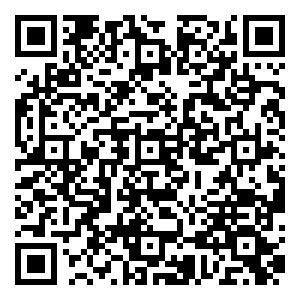Study on Stress-Strain Curves of Rubber Concrete Under Uniaxial Compression Based on Orthogonal Tests
-
摘要: 为了研究橡胶混凝土的单轴受压性能,以水胶比、橡胶替代率、橡胶粒径、粉煤灰替代率为影响因素,采用正交设计方法制作9组试件并进行单轴受压试验。利用极差法对峰值应力、峰值应变、弹性模量、极限应变、韧性指数、脆性指数等力学性能进行敏感性分析,重点分析了最敏感因素橡胶替代率对混凝土力学性能的影响规律,并得到了力学性能与橡胶替代率的无量纲函数关系。结合过镇海模型、Yang模型、Saenz模型,对试验结果进行拟合,确立了橡胶混凝土应力-应变全曲线模型。研究表明:与普通混凝土相比,橡胶颗粒的掺入使混凝土的强度有所降低,但提高了混凝土的延性、韧性和耗能能力;建议的应力-应变全曲线模型与试验结果吻合良好,能准确地描述橡胶混凝土在单轴受压作用下的应力-应变特征。Abstract: In order to study the uniaxial compression performance of rubber concrete,9 groups of specimens were prepared by orthogonal design method with rates of water to cementitious materials, rubber replacement ratios, rubber particle sizes and fly ash replacement ratios as the influencing factors, and uniaxial compression tests were conducted. The sensitivity analysis of the mechanical properties such as peak stress, peak strain, elastic moduli, ultimate strain, toughness indexes, brittleness indexes was carried out by the range analysis method. the influence law of the most sensitive factor, namely the replacement ratio of rubber, on the mechanical properties was analyzed, and the dimensionless functional relation between the mechanical properties and the replacement ratio of rubber was obtained. The stress-strain curve model of rubber concrete was established by fitting the test results with the Guo model, Yang model and Saenz model. The results showed that the strength of concrete was reduced with the addition of rubber particles, but the ductility, toughness and energy dissipation capacity of rubber concrete were improved. The proposed stress-strain curve model was in good agreement with the test results and could accurately describe the stress-strain characteristics of rubber concrete under uniaxial compression.
-
Key words:
- rubber replacement ratios /
- concrete /
- mechanical properties /
- uniaxial compression /
- constitutive model
-
[1] 朱涵.新型弹性混凝土的研究综述[J].天津建设科技,2004(2):35-37. [2] 李悦,王玲.胶集料混凝土研究进展综述[J].混凝土,2006(4):91-95. [3] 李如林.我国橡胶粉生产应用现状及发展[J].中国橡胶,2000(15):15-18. [4] 刘晓勇,谈至明.路用橡胶水泥混凝土研究综述[J].公路,2008(4):186-190. [5] 杨春峰,杨敏,吴文辉.废旧橡胶混凝土的耐久性能试验研究[J].混凝土,2013(5):83-92. [6] TOPCU I B.The properties of rubberized concrete[J].Cement and Concrete Research,1995,25(2):304-310. [7] BENAZZOUK A,MEZREB K,DOYEN G.Effect of rubber aggregates on the physico-mechanical behaviour of cement-rubber composites-influence of the alveolar texture of rubber aggregate[J].Cement& Concrete Composites,2003,25(7):711-720. [8] 刘日鑫,侯文顺,徐永红.废橡胶颗粒对混凝土力学性能的影响[J].建筑材料学报,2009,12(3):341-344. [9] 潘东平.橡胶混凝土的本构关系研究[D].广州:广东工业大学,2007. [10] 魏慧,吴涛,杨雪,等.纤维增韧轻骨料混凝土单轴受压应力-应变全曲线试验研究[J].工程力学,2019,36(7):126-135. [11] 王铁成.混凝土结构设计原理[M].北京:中国建筑工业出版社,2016. [12] 梁兴文.混凝土结构设计原理[M].北京:中国建筑工业出版社,2019. [13] 陈卓明.橡橡胶混凝土界面性能的研究[D].广州:广东工业大学,2019. [14] 梁炯丰,郭立湘,吴华英,等.废弃玻璃细骨料混凝土单轴受压应力-应变全曲线试验研究[J].混凝土,2014(7):40-41. [15] YANG K H,MUN J H,CHO M S,et al.Stress-strain model for various unconfined concretes in compression[J].ACI Materials Journal,2014,111(4):673-685. [16] 过镇海.钢筋混凝土原理[M].北京:清华大学出版社,2017. -

 点击查看大图
点击查看大图
计量
- 文章访问数: 141
- HTML全文浏览量: 22
- PDF下载量: 5
- 被引次数: 0

 登录
登录 注册
注册 E-alert
E-alert

 登录
登录 注册
注册 E-alert
E-alert


 下载:
下载:
